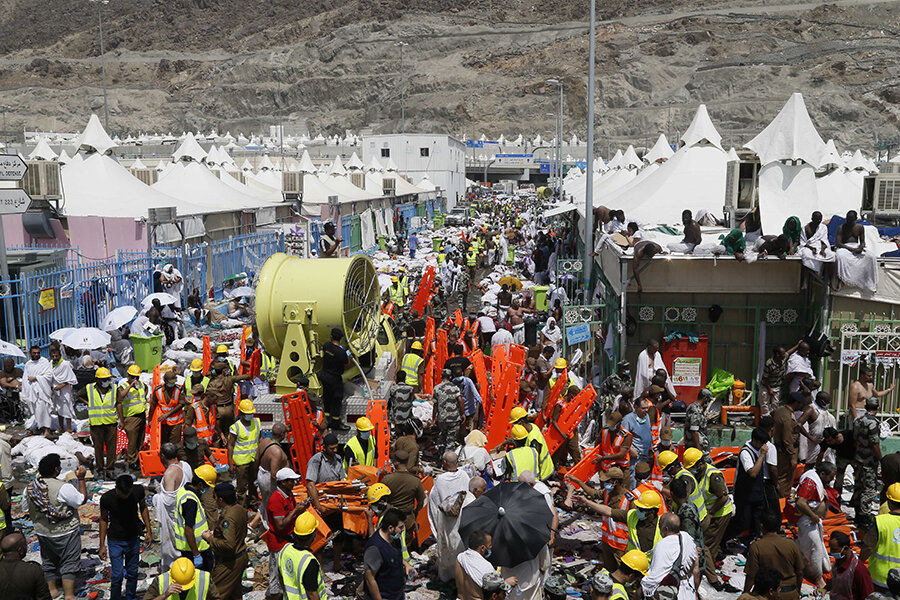Over 450 hajj pilgrims killed during stampede near Mecca
Loading...
| Mina, Saudi Arabia
At least 453 people were killed and hundreds more injured in a stampede Thursday on the outskirts of Mecca, the deadliest tragedy to strike the annual hajj pilgrimage in more than two decades.
It was the second major disaster during this year's hajj season, raising questions about the adequacy of measures put in place by Saudi authorities to ensure the safety of the roughly 2 million Muslims taking part. A crane collapse in Mecca nearly two weeks earlier left more than 100 people dead.
Thursday's crush happened in Mina, a large valley about five kilometers (three miles) from the holy city of Mecca that has been the site of hajj stampedes in years past.
Mina is where pilgrims carry out a symbolic stoning of the devil by throwing pebbles against three stone columns. It also houses more than 160,000 tents where pilgrims spend the night during the pilgrimage.
The stampede occurred in a morning surge of pilgrims at the intersection of streets 204 and 223 as the faithful were making their way toward a large structure overlooking the columns, according to the Saudi civil defense directorate.
The multi-story structure, known as Jamarat Bridge, is designed to ease the pressure of the crowds and prevent pilgrims from being trampled.
The civil defense directorate, which provided the death toll, said at least 719 other pilgrims were injured in the stampede.
Ambulance sirens blared as rescue crews rushed the injured to nearby hospitals.
More than 220 rescue vehicles and some 4,000 members of the emergency services were deployed soon after the stampede to try to ease the congestion and provide alternative exit routes, according to the directorate.
Survivors assessed the scene from the top of roadside stalls near white tents as rescue workers in orange and yellow vests combed the area.
Photos released by the directorate on its official Twitter account showed rescue workers helping the wounded onto stretchers and loading them onto ambulances near some of the tents.
Some 2 million people are taking part in this year's hajj pilgrimage, which is an obligation of every able-bodied Muslim. The pilgrimage began in earnest Tuesday.
Saudi authorities take extensive precautions to ensure the security of the hajj and the safety of pilgrims.
There are about 100,000 security forces deployed this year to oversee crowd management and ensure pilgrims' safety during the five-day pilgrimage.
At Mina specifically, authorities have put measures in place over the years to try to alleviate the pressure posed by masses of pilgrims converging on the site of the stoning ritual.
Officials use surveillance cameras and other equipment to limit the number of people converging on the site, and the Jamarat Bridge has multiple exits to facilitate the flow of people.
But tragedies are not uncommon.
The death toll from Thursday's stampede far exceeded that of a similar incident in 2006, near the site of the latest incident, when more than 360 pilgrims were killed in a stampede. Another stampede at Mina in 2004 left 244 pilgrims dead and hundreds injured.
The deadliest hajj-related tragedy happened in 1990, when at least 1,426 pilgrims perished in a stampede in an overcrowded pedestrian tunnel leading to holy sites in Mecca.
Thursday's stampede happened less than two weeks after a giant construction crane came crashing down on the Grand Mosque in Mecca, the focal point of the hajj.
That accident, on Sept. 11, killed at least 111 people and injured more than 390.
Authorities blamed the crane collapse on high winds during an unusually powerful storm, and faulted the construction giant Saudi Binladin Group, which oversees construction at the mosque, for not following operating procedures.







